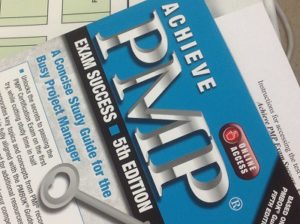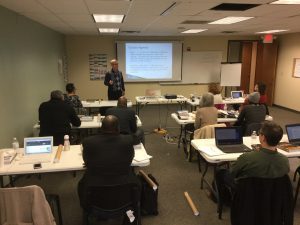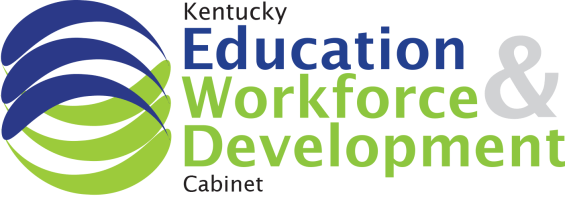
A Sneak Preview of the PMP Exam Prep Course
One of our students offered to blog about our PMP Exam Prep class in Cincinnati. We thought that sounded like an excellent idea! Her summary of the course is below.
The week before the class:
Someone told me a couple years ago that I was a “Project Manager.” I didn’t realize this, but when I heard I could get training and become certified I looked into it and found the requirements per pmi.org:
- A secondary degree (high school diploma, associate’s degree or the global equivalent)
- 7,500 hours leading and directing projects
- 35 hours of project management education
OR
- Four-year degree
- 4,500 hours leading and directing projects
- 35 hours of project management education
The PMP Exam Prep course through Breakthrough Performance Group (BPG) fulfills the project management education requirement so I registered for the 1-week (35-hour) course. I was contacted by BPG to arrange to obtain the required PMP Exam Prep books before the class started. They said that having some exposure to the materials before class would help. They recommended reading the first couple of chapters of both books. We used Achieve PMP Exam Success, 5th Edition by Diane Altwies, PMP and Janice Preston, PMP as well as A guide to the Project Management Body of Knowledge (PMBOK Guide), 6th Edition, published by the Project Management Institute, Inc.
 I was glad to get the PMP Exam Prep materials early. Some of the content was familiar to me; some of it was new and some made sense, but I had not had a formal definition, such as the types of systems used in an organization. I had experience with functional organizations and appreciated the idea of projectized organizations. During my time at a local newspaper, as an online marketing specialist, I should have been called a digital project manager because I was given short-term projects by many department heads. It was difficult to get support on projects because everyone was so busy. After hearing about project management, I was excited about the class because most of what I do now, as an online marketing consultant, can be defined as a project:
I was glad to get the PMP Exam Prep materials early. Some of the content was familiar to me; some of it was new and some made sense, but I had not had a formal definition, such as the types of systems used in an organization. I had experience with functional organizations and appreciated the idea of projectized organizations. During my time at a local newspaper, as an online marketing specialist, I should have been called a digital project manager because I was given short-term projects by many department heads. It was difficult to get support on projects because everyone was so busy. After hearing about project management, I was excited about the class because most of what I do now, as an online marketing consultant, can be defined as a project:
A temporary endeavor undertaken to create a unique product, service or result.
During my reading, I learned the difference between a project, a program, and a portfolio. This was new to me. I had heard of “program managers,” but I had no idea how they differed from project managers. Projects are short, so having something more long-term to organize related projects and having someone to manage multiple project managers was an easy concept to understand. A program is “a collection of related projects,” a portfolio is “a collection of projects and programs; not necessarily related.”
First Day of PMP Exam Prep Class
 Class started promptly at 8:30; the normal “forming” activities took place, such as introductions and setting rules for attendance. There were 11 students in the class with varying backgrounds including banking, health care and IT. Our PMP Exam Prep instructor, Daryl Gunnarson, PMP, owns a consulting firm and runs a non-profit organization. He was confident we could get through 13 chapters in 3 and a half days. I was not convinced because most of this material was new to me. Although I had done many projects, informally, I was not familiar with the formal style that most of the other students had used in the past. He explained that the last day and a half would be testing (hence the name PMP Exam Prep!)
Class started promptly at 8:30; the normal “forming” activities took place, such as introductions and setting rules for attendance. There were 11 students in the class with varying backgrounds including banking, health care and IT. Our PMP Exam Prep instructor, Daryl Gunnarson, PMP, owns a consulting firm and runs a non-profit organization. He was confident we could get through 13 chapters in 3 and a half days. I was not convinced because most of this material was new to me. Although I had done many projects, informally, I was not familiar with the formal style that most of the other students had used in the past. He explained that the last day and a half would be testing (hence the name PMP Exam Prep!)
 We went over what would be learned and then we did a group activity. When managing projects, there are 5 phases that have some overlap, but the activities in each phase are very well defined. The 5 phases of a project life cycle are Initiate, Plan, Execute, Monitor/Control and Close. The activity helped us see which activities happened in which phases.
We went over what would be learned and then we did a group activity. When managing projects, there are 5 phases that have some overlap, but the activities in each phase are very well defined. The 5 phases of a project life cycle are Initiate, Plan, Execute, Monitor/Control and Close. The activity helped us see which activities happened in which phases.
We read chapter 3 and chapter 4 of the Achieve PMP Exam Success in class. The fourth chapter, Project Integration Management, was difficult for me, but Daryl said it was the most difficult chapter and that the rest of them would be easier to learn. Our assignment for the evening was to read chapter 5.
Second Day of Class

By day 2 we were getting into the details of project management; chapter 5 explains the concept of scope and how important it is to define the scope of a project right away. Managing “scope creep” can keep a project team from having to make drastic changes later in the project. It also helps with communication with stakeholders (as defined in the PMBOK Guide, stakeholders are people, groups or organizations who affect, are affected by or perceive to be affected by an activity, decision or outcome of the project.)
We also read chapter 6 and 7. Chapter 6 covers project time management which happens in the planning phase and the monitoring/controlling phase of a project. One method for determining how long a project will take is the Critical Path Method which lays out all the tasks in a project and how they affect each other, to find the shortest possible time to complete the project.
Many activities have tools, formulas, and charts for organizing the information. The Cost Management of a project (Chapter 7) describes the system to help make financial decisions and communicate with stakeholders.
The Planned Value of a project (PV) is the sum of the approved cost estimates for activities scheduled to be performed during a given period (as defined in Achieve PMP Exam Success, 5th Edition). Of course, things doesn’t always go “as planned” so the Actual Cost is also acknowledged, which is the amount of money actually spent in completing work in a given period, and the Earned Value is the sum of the approved cost estimates for activities completed during a given period. Here’s where it gets fun! It is possible to determine if a project is on-time, behind-schedule, ahead of schedule, over-budget, under-budget or on-budget based on PV, AC, and EV:
Cost Variance is EV-AC. If the answer is negative the project is over budget.
Schedule Variance is EV-PV. If the answer is negative the project is behind schedule.
Looking at sample test questions throughout the day helped with getting acquainted with test questions. Some of the questions have very concrete answers and some of them are less concrete and more about what looks like the best answer. It is a good idea to read every question carefully because one word like “EXCEPT” or “LEAST” can change the answer completely. Some of the questions have a couple answers that might look feasible, so an experienced project manager might have an advantage. I used my own experience to answer many of the questions. Having scenarios in mind can help make sense of test questions. We read Chapter 8 for homework.
Third Day of Class
We were getting closer to testing day so I was getting anxious. It’s a lot to take in, and we still had 5 chapters to go over. Daryl recommends using the visual study aids that were included in our course materials. The posters illustrate the connections between the phases, the activities, and the tools. They are excellent for studying. Some students cut the posters into index cards for better portability.
We went over chapter 8, Quality, which we read at home. Quality within a project is determined early. If a product is involved, it could have a high-quality grade or a low-quality grade, but knowing during the planning phase is key. Quality is a continued theme through execution and monitor/control phase. There are many tools that help determine quality such as a Pareto charts and cause-and-effect diagrams. One suggestion while executing a project is to avoid going above and beyond the customer’s expectation because, in a project, it is important to complete the project on time. Adding additional work that goes beyond the scope is not recommended.
We read chapter 9 in class. Human Resource Management is a skill every project manager should have. Being able to put together a team and manage a team to project completion is vital. Knowing the skill level of each team member can be beneficial for planning and time management. Does someone need training? Does someone on the team have other commitments like vacation time? Daryl said during class, “Life happens.” Sometimes project managers have to leave a project and another one has to fill that role mid-project. That person has to work fast to get caught up with the rest of the team. Human resource management also includes team building and communicating responsibilities effectively.
Daryl also said most of a project manager’s time is spent in communication (which is chapter 10). During a project, a communication plan keeps everyone “on the same page.” Each project has its own communication plan; that could be through an information technology system, face-to-face or virtual meetings. Planned communications may be daily, weekly, or monthly. The customer and the project manager decide on how and how often communication will happen externally. The project manager decides how often and how the project team will communicate.
Chapter 11 was the last chapter we went over on the 3rd day of class. As defined in Achieve PMP, Risk is an uncertain event or condition that could have a positive or negative impact on a project’s objectives. Having a financial reserve is one way to help mitigate risk. There may be a management reserve that is held at the program management level, which is available for many different projects. There may also be a contingency reserve at the project level that the project manager can use at his/her discretion.
Fourth Day of Class
 We only had a few more chapters by Thursday, and we were definitely in the “norming” phase as we became more comfortable with each other and the material. Our devoted instructor, Daryl, added some extra slides to go over Ethics. One thing he emphasized was that when a project manager commits to a project, he/she should see it out until completion and put it before other options or engagements. Projects have completion dates and using good judgment in meeting expectations is the responsibility of the project manager. After we finished up with Stakeholders and Procurement we took our first practice exam.
We only had a few more chapters by Thursday, and we were definitely in the “norming” phase as we became more comfortable with each other and the material. Our devoted instructor, Daryl, added some extra slides to go over Ethics. One thing he emphasized was that when a project manager commits to a project, he/she should see it out until completion and put it before other options or engagements. Projects have completion dates and using good judgment in meeting expectations is the responsibility of the project manager. After we finished up with Stakeholders and Procurement we took our first practice exam.
The official exam is four hours for 200 questions so Daryl gave us one hour to answer 50 questions. It was an excellent simulation. After we took the test we went over some of the most challenging questions together. It was nice to hear how others interpreted the questions and determined their answers.
I knew the full practice exam was going to be the last day. Each night after the PMP exam prep class, I would read the chapters we needed to read to be prepared for the next day, but on Thursday night I mostly went over the formulas we learned earlier in the week. I wanted to understand them rather than “memorize” them. I also used cards to study the statistical tools and the breakdown of a project.
Final Day of PMP Exam Prep Class
 We took time before the test to ask last-minute questions, then we began the test. There were some areas I could have studied more such as the charter requirements. I thought I knew the Critical Path system better than I did. I missed some points there I wish I hadn’t. There were questions on the test that looked very subjective but reading them more than once and thinking about what the question was asking made choosing the answer much easier.
We took time before the test to ask last-minute questions, then we began the test. There were some areas I could have studied more such as the charter requirements. I thought I knew the Critical Path system better than I did. I missed some points there I wish I hadn’t. There were questions on the test that looked very subjective but reading them more than once and thinking about what the question was asking made choosing the answer much easier.
On day five of PMP Exam Prep, we also went to the PMI website and learned how to apply to take the exam. To be eligible to take the PMP exam, each person must complete an application that describes his/her experience and acknowledges the requirements (see the top of this blog).
The class agreed that meeting to prepare for the official PMP exam would be helpful, so we set up dates and times to meet and go over each chapter together. I am going through other PMP exam prep practice tests and study aids (there are apps that are free and useful) until I am ready to take the test.
I want to thank Daryl for being a very patient and supportive PMP Exam Prep instructor, Breakthrough Performance Group for making the class available, and my classmates for the continued encouragement! I also want to wish everyone good luck on the PMP Exam!







